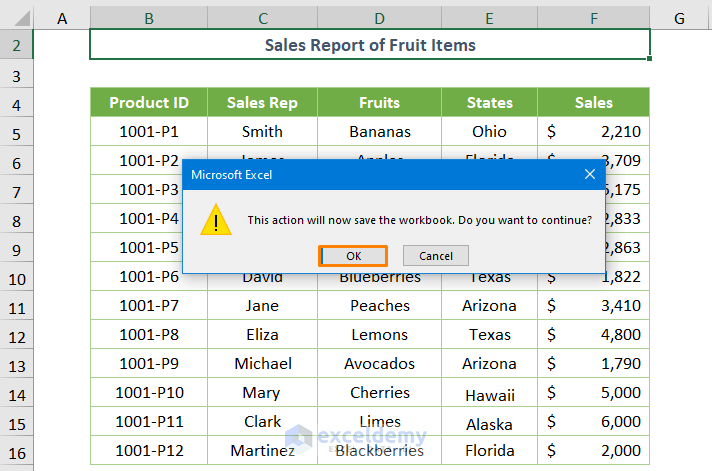Excel Sharing: Multi-User Access in 2024

Collaborative work environments have evolved rapidly, and by 2024, Excel sharing features have transformed into sophisticated tools that facilitate seamless collaboration among teams, whether they are working remotely or within the office. This blog post delves into how you can utilize Excel's multi-user access features to enhance productivity, streamline workflows, and manage project data effectively.
Understanding Excel’s Sharing Capabilities

Before diving into the practical aspects of using Excel for team collaboration, it’s crucial to understand what Excel’s sharing features offer:
- Real-Time Collaboration: Team members can work on the same spreadsheet simultaneously, seeing changes made by others in real-time.
- Commenting and Conversations: Users can leave comments or start conversations directly within the workbook, making it easier to discuss changes, suggestions, or issues.
- Version History: Track changes over time, allowing you to revert to any previous version if needed.
- Permissions and Access Control: Set who can edit, view, or comment on the document, tailoring access rights to team roles.
Setting Up Excel for Multi-User Access

To leverage Excel’s capabilities for team work, follow these steps:
- Cloud Integration: Ensure your Excel files are saved in a cloud storage service like OneDrive, SharePoint, or Google Drive. This is the foundation for sharing.
- Share the Workbook:
- Click on ‘Share’ in the top-right corner of the Excel window.
- Enter the email addresses of the people you wish to share with or copy a shareable link.
- Choose whether they can edit, view, or only comment.
- Manage Permissions: Use Excel’s built-in features to control what users can do:
- Click ‘File’ then ‘Share’ to manage permissions further.
- Here, you can add or remove users, change their permissions, or set expiration dates for access.
- Version Control: Automatically maintain version history:
- Go to ‘File’ > ‘Info’ > ‘Version History’ to view or restore previous versions.
☝️ Note: Always ensure that all participants have the latest version of Excel to avoid compatibility issues.
Collaborative Features in Detail

Real-Time Editing

When users work on the same file, Excel highlights changes made by others in different colors, showing who is modifying what part of the document. This feature can prevent overwrites and streamline workflow:
- You’ll see cursors from other users as they make changes, akin to having everyone around a shared table.
- Notifications can alert you to changes, ensuring you don’t miss important edits or comments.
Comments and Threaded Replies

Comments are no longer just annotations; they’ve evolved into a collaborative tool:
- Click on any cell or range to add a comment, initiating a thread for that specific part of the workbook.
- Team members can reply, @mention others, or resolve threads once the issue is addressed.
📝 Note: Use the '@' symbol followed by someone's name to get their attention directly within the document.
Managing User Access

Controlling access is essential for secure collaboration:
- View Only: Users can only read the document.
- Edit: Full editing capabilities.
- Comment: Users can suggest changes via comments but cannot alter data directly.
| Permission Level | Capabilities |
|---|---|
| View Only | Read, View Comments |
| Edit | Edit, Add/Delete Comments, Manage Permissions |
| Comment | View and Comment Only |

Advanced Features and Tips

Worksheet Protection

Protecting sheets or ranges can ensure data integrity while allowing collaboration:
- To protect a sheet, go to ‘Review’ > ‘Protect Sheet’ to lock down the worksheet or certain cells.
- This can prevent accidental changes while allowing certain users to make edits within defined areas.
Co-Authoring

Excel’s Co-Authoring feature lets multiple people work on the same sheet at the same time:
- Ensure all users have AutoSave enabled to reduce conflict issues.
- Turn on ‘Conflict Resolution’ to manage who gets to make the final change if simultaneous edits occur.
⚠️ Note: Conflicts can arise if two users edit the same cell at the same time. Excel handles this gracefully by showing both changes for manual resolution.
Common Challenges and Solutions

As useful as Excel’s sharing features are, there are potential pitfalls:
- Formatting Conflicts: Use ‘Protect Workbook’ to restrict formatting changes.
- Data Overwrites: Establish a protocol for who can edit what sections, using sheet or cell protection where necessary.
- Communication Overload: Limit comments to critical feedback only, keeping discussions on task management tools or via email.
In this era of digital collaboration, Excel's multi-user access features stand out as invaluable tools for teams. By mastering real-time editing, comments, permission controls, and advanced collaboration functionalities, you can significantly boost productivity and streamline workflows. Remember, effective use of these features requires a balance of control and openness, ensuring all team members feel empowered to contribute while maintaining document integrity.
Can I share Excel files with non-Microsoft users?

+
Yes, you can share Excel files with anyone who has a web browser. They can access, view, and even edit the document with a compatible Microsoft account or a free account on a supported platform like Google.
How do I resolve conflicts in Excel when co-authoring?

+
Excel’s automatic conflict resolution picks the most recent edit, but if manual intervention is needed, the workbook owner can resolve conflicts by choosing the correct version or redoing the changes.
What happens if a user leaves the company?

+
Their access can be removed from the shared workbook, and any comments or edits they made will remain, but their user credentials will no longer be associated with those changes.
Related Terms:
- Share Excel Online
- Share Workbook Excel 2019
- Excel to OneDrive
- Get data from table Excel
- Word file locked for editing
- Excel set header row